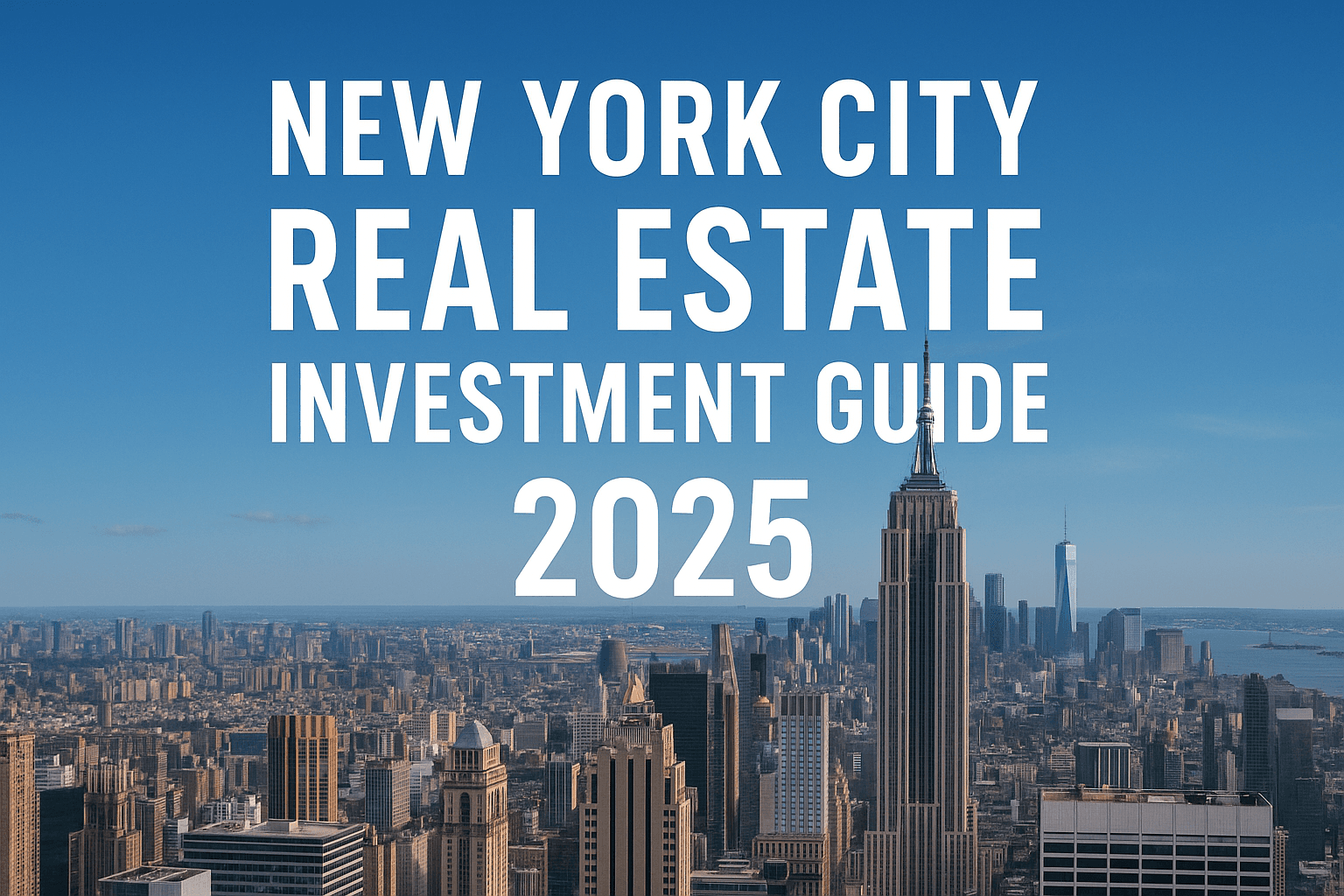New York City Real Estate Investment Guide 2025

New York City continues to anchor global real estate portfolios. In 2025, a steady return-to-office trend, expanding life-science hubs, and strong rental demand are reshaping opportunities across the five boroughs. Here’s how investors can navigate pricing, policy, and financing with confidence.
1. Prime Residential Resurgence Manhattan’s resale market stabilized after a post-pandemic reset. Inventory remains tight below $2 million, and renovated pre-war co-ops in the Upper West and Upper East Sides command premium pricing.
- Brooklyn focus: Park Slope, Carroll Gardens, and Williamsburg maintain double-digit rent growth as remote workers favor larger layouts and amenities. - Queens watchlist: Long Island City and Astoria benefit from new mixed-use towers and waterfront parks.
2. Midtown and Downtown Office Repositioning Flight to quality is real—Class A+ towers with wellness features and flexible floor plates outperform legacy assets.
- Strategy: Target buildings eligible for 421-g conversions or office-to-residential incentives to hedge leasing risk. - Incentives: Follow progress on the Midtown South rezoning and state-led adaptive reuse bills.
3. Life Sciences and Lab Space Long Island City, West Harlem, and Kips Bay host lab-ready developments backed by university and hospital anchors. Triple-net leases and longer terms attract institutional capital.
4. Infrastructure Catalysts Second Avenue Subway phase two, congestion pricing, and Penn Station upgrades influence value corridors. Map transit proximity and construction timelines before underwriting aggressive rent growth.
5. Due Diligence Essentials - Verify condo/co-op financial statements, reserve funds, and Local Law 97 compliance timelines. - Stress-test financing with current interest rates and insurance premiums. - Model property tax exposure—watch assessed value jumps during abatements sunsets.
Step-by-Step Deal Checklist 1) Define target borough, asset class, and hold horizon. 2) Analyze DOB and Department of Finance records for violations and assessments. 3) Commission legal review for rent regulation status and building-wide agreements. 4) Underwrite conservative rent and expense assumptions; include vacancy and CapEx buffers. 5) Align closing timelines with lender requirements and board approvals.
FAQs - Are office conversions viable? Yes, when floor plates, light access, and zoning align; expect high CapEx. - What about short-term rentals? NYC enforces strict registration—prioritize traditional leasing unless assets meet regulatory standards.
Conclusion NYC real estate rewards disciplined investors who pair market knowledge with meticulous due diligence. Focus on assets aligned with infrastructure improvements, demographic shifts, and sustainability mandates for long-term strength.
Related Topics (Ads):
Advertisements - Sponsored content related to this topic


